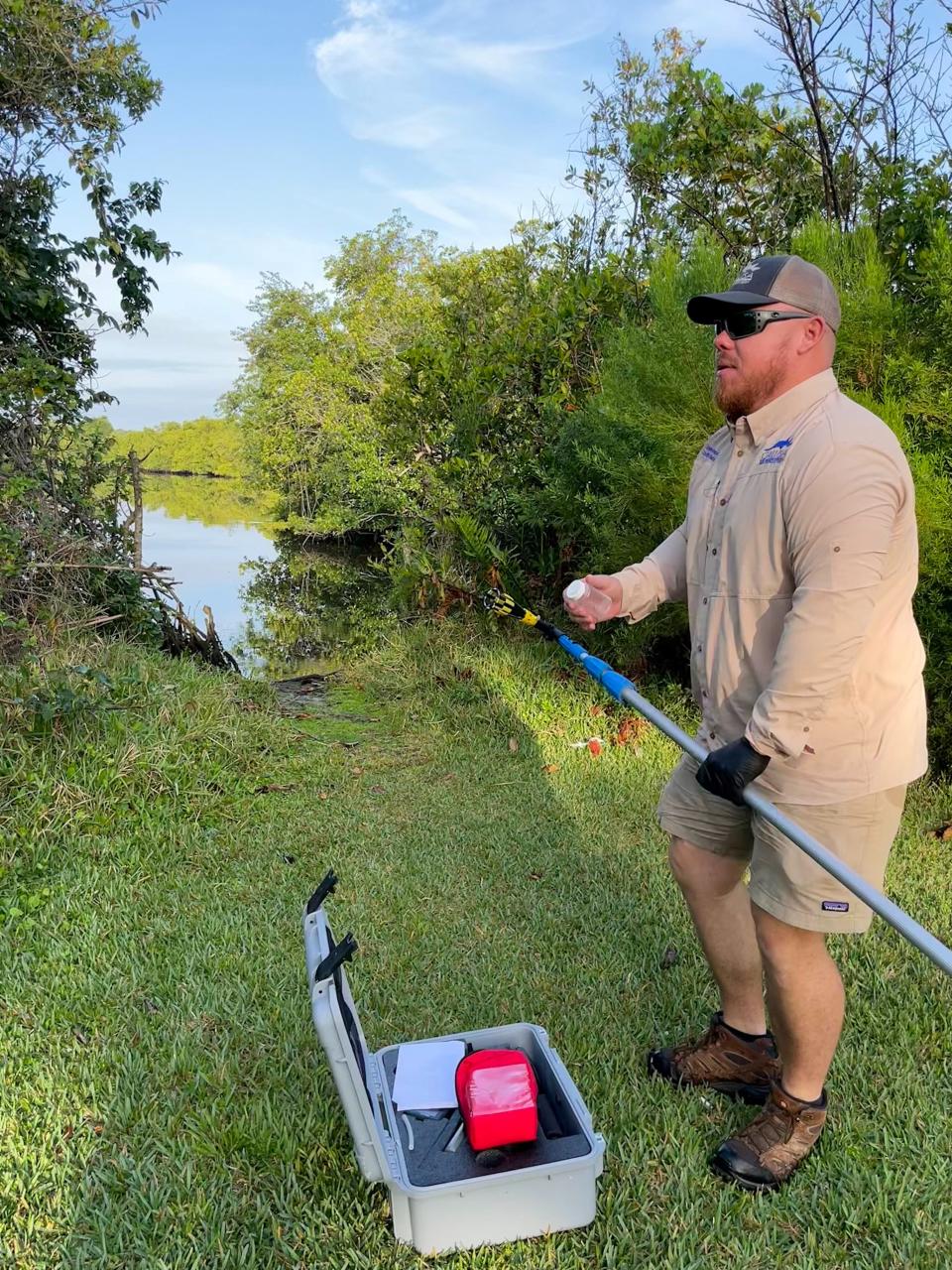Army Corps resuming releases of polluted Lake Okeechobee water down the Caloosahatchee
Lake Okeechobee discharges are flowing again as parts of the Caloosahatchee River have slowed to a crawl in recent days.
Major Cory Bell with the U.S. Army Corps of Engineers said Friday the agency will resume releases to the Caloosahatchee with a target flow of 650 cubic feet per second as measured at the W.P. Franklin Lock and Dam in Alva.
"The canal on the Caloosahatchee is almost stagnant, and those conditions aren't conducive to the health of the downstream estuary," Bell said during a media call. "We have decided to resume minimal flows to the west (of Lake Okeechobee) at 650 (cubic feet per second) to get water moving in a beneficial way."
On the prior Friday (March 29), the Corps said it would pause releases for two weeks.
For several weeks the Army Corps has pushed Lake Okeechobee water down the Caloosahatchee River in hopes of lowering lake levels before the next hurricane and rainy seasons arrive.

But in recent weeks blue-green algae has shown up in areas like the tidal canals in Cape Coral and upstream of the Fort Myers area, and the Army Corps stopped flows.
Flows will start again though soon as the Army Corps continues to push water out of the lake before the wet summer months ahead.
The lake has been high for much of the past year, even though parts of south Florida have been in moderate drought conditions.
Bell said a lot of the rain that fell earlier this year is no longer a threat as El Nino conditions have given way to more neutral conditions.
El Nino tends to bring wetter, slightly cooler than average winters to Southwest Florida.
"Along the entire river, flows have reduced dramatically and so what we're looking for is providing beneficial flows to reduce the potential for algae blooms," Bell said. "(And) there's been minimal rain to the (Caloosahatchee) basin."
Calusa Waterkeeper Codty Pierce said conditions in the river are bad and getting worse and that coming warmer weather will only worsen the situation.
Blue-green algae health advisories
"I don't know where this puts us," Pierce said of the releases. "It's going to flush out some additional blue-green algae and (the Florida Department of Health) has issued health advisories for Telegraph Creek and others. And it's warmer earlier than normal this year."
Pierce and others on this coast say the Army Corps should also make releases to the St. Lucie system when lake water is flowing toward the Fort Myers-Sanibel area.
"We're not going to be in the harmful range, but this doesn't sit good with the public," Pierce said. "The East Coast continually gets zero releases, and they say they don't want to put estuary against estuary. But this looks bad."
More: River murky, tainted after 40 days of Lake O discharges, but temporary relief's in sight
Bell said there will be zero releases for now to the St. Lucie, the East Coast outlet for Okeechobee.
The surface of Lake Okeechobee has historically been kept between 12.5 and 15.5 feet above sea level to provide flood protection and water supply for agriculture, urbanized areas and natural systems like the Caloosahatchee.
Surface levels were at 15.2 feet above sea level Friday, which is too high for the lake's submerged aquatic vegetation.
Connect with this reporter: Chad Gillis on Facebook.
This article originally appeared on Fort Myers News-Press: Army Corps continues Lake O releases, bringing end to temporary pause

